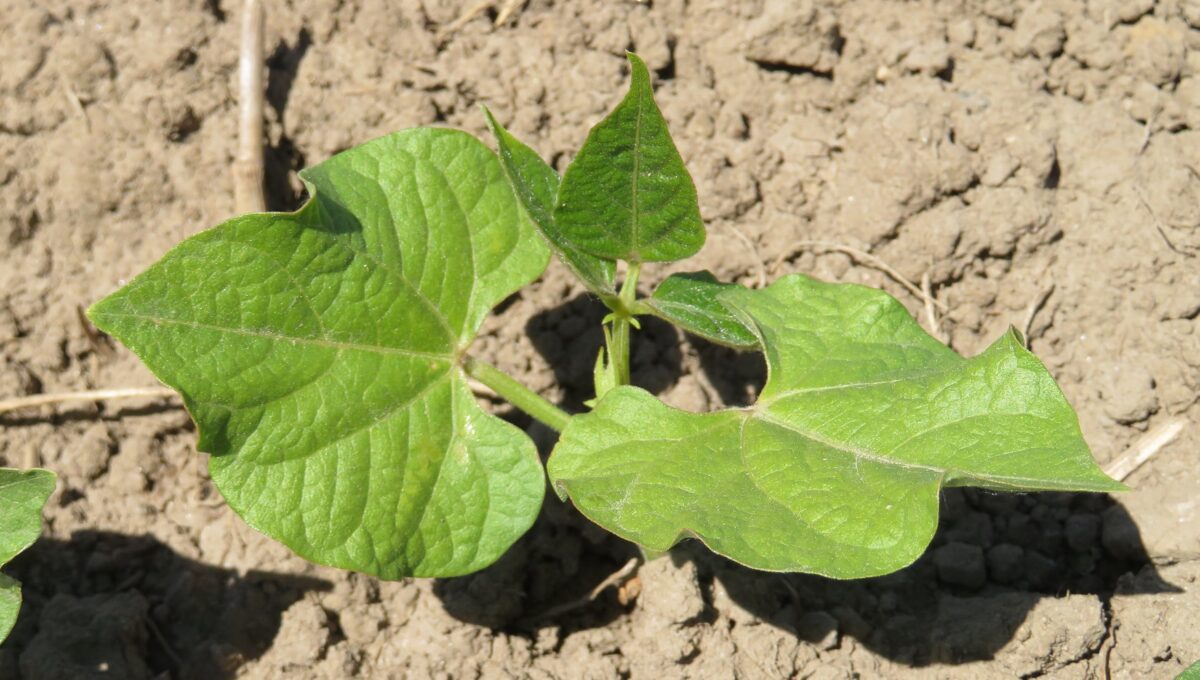Bean varieties are characterized by their growth habit. Indeterminate plants continuously grow and exhibit long vines. Most of the commonly grown bean types have a semi-determinate growth habit, meaning they continue to grow after flowering begins and develop short to long vines. Determinate types tend to flower and ripen over a short period. Determinate types (also called “bush”) can be more susceptible to moisture and heat stress than indeterminate or “vining” types, which flower and fill seed over a longer period.
In addition to determinate and indeterminate plant types, the growth of beans is also identified as:
Type I — determinate bush growth habit, for example, most cranberry beans and very early white bean varieties.
Type II — upright short vine, narrow plant with 3–5 branches for example, most white, black, kidney, otebo varieties.
Type III — plants with weak main stem that produces a vine that is prostrate along the soil surface.
The vegetative and reproductive stages of dry edible bean growth are indicated in the table below. Vegetative stages are described by the number of trifoliates on the main stem. Trifoliates are counted when the edges of unfolding leaves no longer touch. Dry edible beans are normally self-pollinated, and pollination typically occurs before the flower fully opens.
Table 1. Vegetative and reproductive growth stages of dry edible beans
| Stage abbreviated | Stage title | Description | Days from planting* |
| VE | hypocotyl emergence | seedlings emerge from the soil (crook stage) | 7-8 |
| VC | cotyledon & (unrolled unifoliate) | hypocotyl straightens, cotyledons (lead leaves) unfold, and unifoliate visible | 8-9 |
| V1 | first trifoliate | first fully developed trifoliate leaf at third node | 10 |
| V2 | second trifoliate | second trifoliate (leaf edges no longer touching) | 19 |
| V3 | third trifoliate | third trifoliate unfolds. Secondary branching begins in leaf axil. | 29 |
| V4 | fourth trifoliate | fourth trifoliate | 33 |
| V5 | fifth trifoliate | bush – Type I plants (determinate types) begin to display blossom and become stage R1 | 50 |
| V8 | eighth trifoliate | vine – Tyle II plants (indeterminate types) begin to display blossom and become R2 | 40 |
| Vn | trifoliate n | nth trifoliate develops at node N-2; new node every 3-5 days | 40 + n |
| R1 | first flower | one open flower per plant | 50 |
| 30% flower | open and dying blossoms are present, but no evidence of pods; 30% of total blossoms that will appear are open | 53 | |
| R2 | 50% flower | appearance of first pods (pin beans) | 53 |
| R3 | early pod set | one pod has reached maximum length | 56 |
| R4 | mid-pod | 50% of pods have reached maximum length (seed not discernible) | 60 |
| R5 | early seed fill | one pod per plant with fully developed seeds | 64 |
| R6 | mid seed fill | 50% of pods with fully developed seeds | 66 |
| R8 | maturing | 50% of leaves yellowing, point of maximum production | 90 |
| R9 | physiological maturity | 80% of pods have changed colour from green to mature colour, only 40% of leaves still green | 105 |
* Approximate days from planting will vary with season and cultivar.
